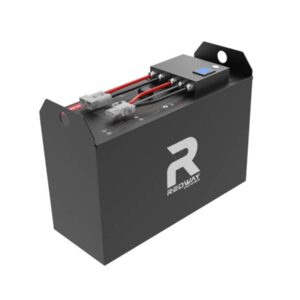How to bring a forklift battery back to life?
Reviving a forklift battery requires systematic diagnostics and targeted interventions. Lead-acid batteries often fail due to sulfation or electrolyte imbalance, while lithium-ion versions may suffer from cell imbalance or BMS faults. Key steps include thorough voltage testing, controlled equalization charging (2.4V/cell for lead-acid), and electrolyte top-ups with distilled water. For lithium batteries, cell-level balancing via professional-grade chargers often restores capacity.
How to Maximize Forklift Battery Lifespan
What’s the first step in diagnosing a dead forklift battery?
Begin with a voltage check using a multimeter. Functional 48V lead-acid batteries should show ≥50V when fully charged. Lithium batteries require checking individual cell voltages—variations exceeding 0.2V indicate imbalance.

Start by cleaning terminals with baking soda solution to eliminate corrosion-induced resistance. Measure open-circuit voltage: <80% of nominal voltage suggests deep discharge. For lead-acid types, use a hydrometer to test specific gravity—readings below 1.220 signal sulfation. Pro Tip: Never attempt equalization on lithium batteries without BMS supervision—it risks overvoltage damage. Imagine a 48V battery showing 42V—this 12.5% deficit likely requires desulfation pulses rather than simple recharging.
How does equalization charging revive lead-acid forklift batteries?
Equalization applies controlled overcharge (2.4-2.7V/cell) to break sulfate crystals. This 8-12 hour process requires temperature monitoring to prevent thermal runaway.
During equalization, battery voltage temporarily spikes to 58-60V for 48V systems. Gas vents must stay open to release hydrogen—sparks risk explosions. A real-world example: A 36V battery recovering from 1.180 SG to 1.280 after three equalization cycles. Pro Tip: Post-equalization, perform capacity tests—if runtime remains below 70%, consider plate replacement. But what if voltage doesn’t stabilize? That indicates irreversible sulfation requiring battery replacement.
| Method | Lead-Acid | Lithium-Ion |
|---|---|---|
| Equalization | Effective | Harmful |
| Pulse Desulfation | Moderate Success | N/A |
Forklift Battery Applications and Maintenance Tips
Battery Expert Insight
FAQs
Can you revive a battery with dried cells?
Only partially. Refill with distilled water to cover plates, then apply slow charge (C/20). Expect 50-60% capacity recovery if plates aren’t warped.
How many revival cycles do batteries tolerate?
Lead-acid: 3-5 major recoveries. Lithium: Up to 10 BMS resets if cell health exceeds 70% State of Health (SoH).
